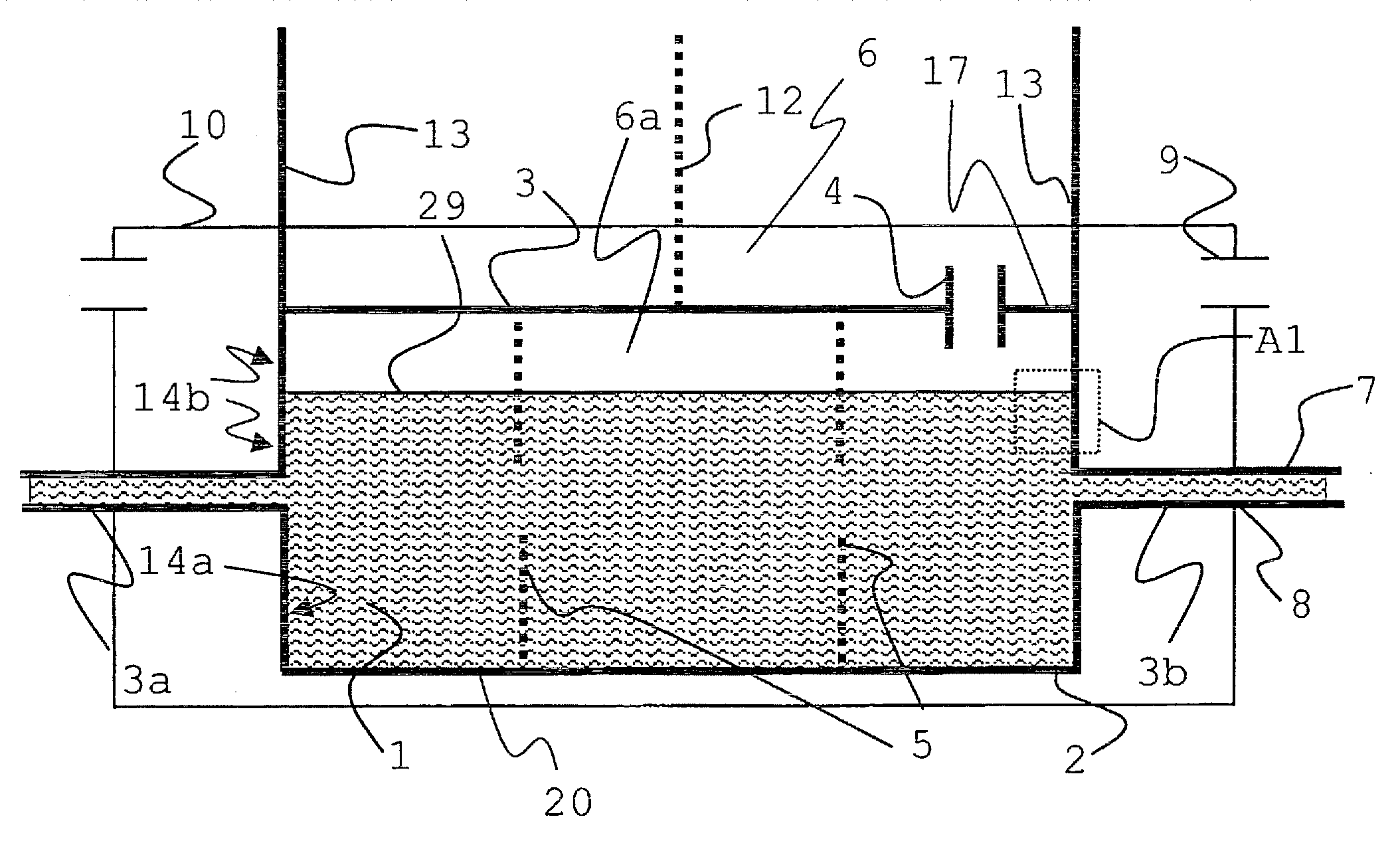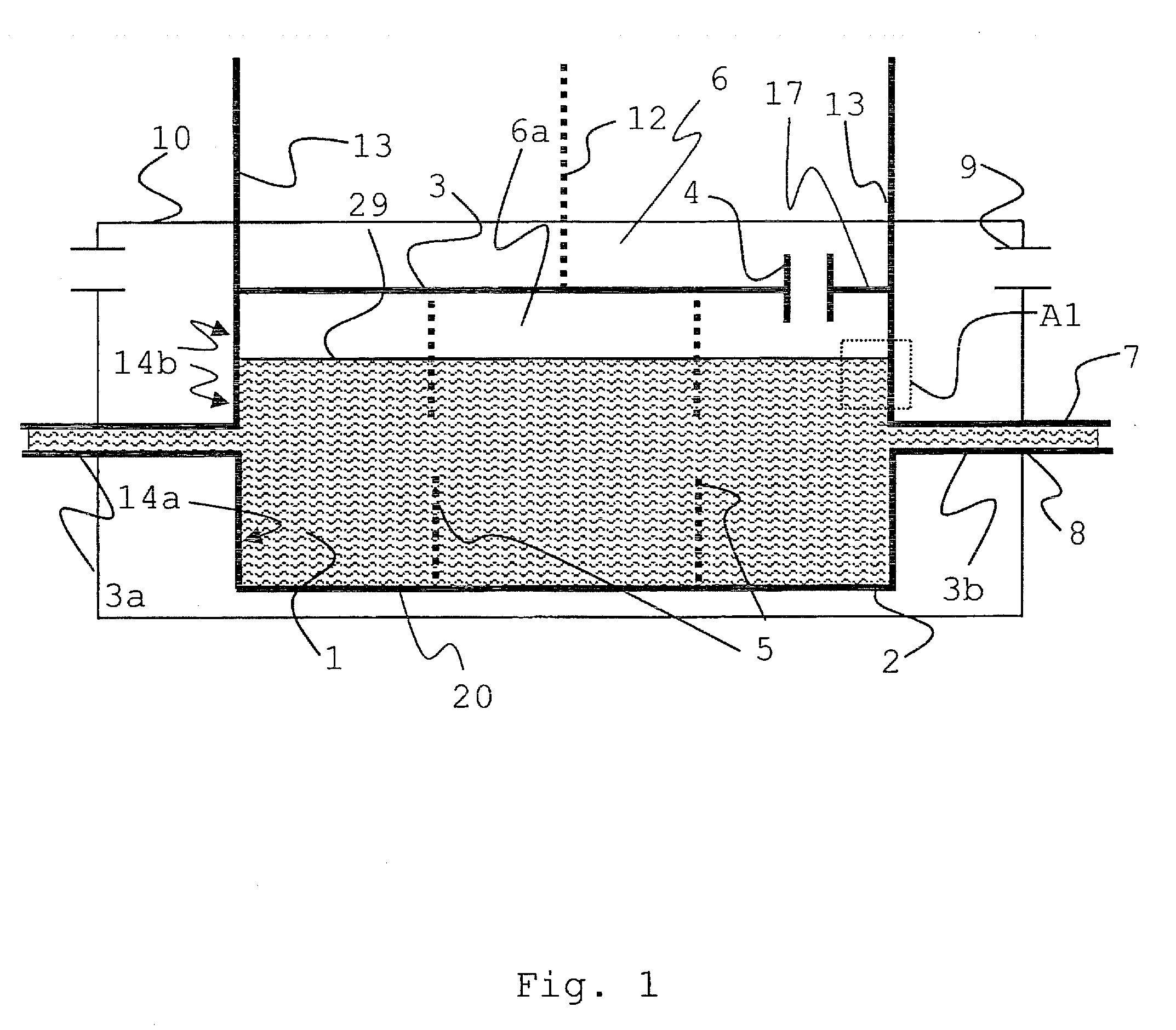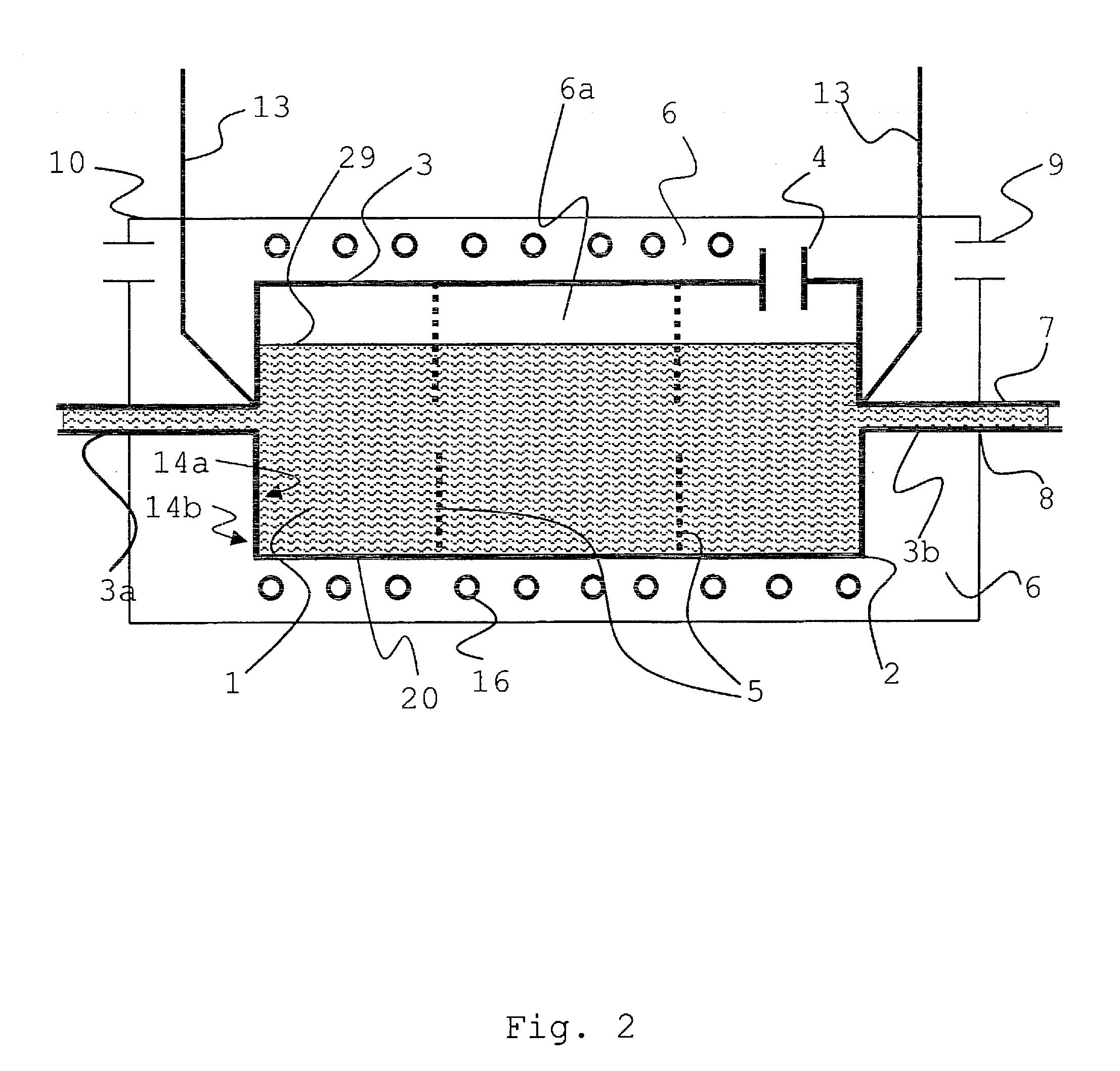Device and method for the continuous fining of glasses with high purity requirements
a technology of high purity and fining device, which is applied in the direction of glass shaping apparatus, furnace types, charging furnaces, etc., can solve the problems of small amounts of pt or other alloy constituents released into the melt, platinum used as cladding material or bulk material, and apparatus made of platinum or platinum alloys
- Summary
- Abstract
- Description
- Claims
- Application Information
AI Technical Summary
Benefits of technology
Problems solved by technology
Method used
Image
Examples
Embodiment Construction
[0001]The present invention relates to a device and a method for the continuous fining of highly pure low-viscosity glass melts in an apparatus.
BACKGROUND OF THE INVENTION
[0002]For the quality of glasses for optical applications, in particular optical glasses, fiber-optical glasses, display glasses and / or technical glasses with stringent requirements, the absence of gas inclusions or gas bubbles and a minimum of discoloring inclusions are crucial for the unperturbed transmission of electromagnetic radiation. Furthermore, the quality of a glass is essentially influenced by its homogeneity and the absence of striations. Toxic substances or at least substances which are for concern for health or ecologically, for example silicon or antimony, should be avoided as much as possible.
[0003]In the first process step of glassmaking the starting substance, the so-called batch, is melted. After the batch has become viscously fluid owing to increase in temperature, the homogenization slowly begi...
PUM
| Property | Measurement | Unit |
|---|---|---|
| temperature | aaaaa | aaaaa |
| diameter | aaaaa | aaaaa |
| wavelengths | aaaaa | aaaaa |
Abstract
Description
Claims
Application Information
 Login to View More
Login to View More - R&D
- Intellectual Property
- Life Sciences
- Materials
- Tech Scout
- Unparalleled Data Quality
- Higher Quality Content
- 60% Fewer Hallucinations
Browse by: Latest US Patents, China's latest patents, Technical Efficacy Thesaurus, Application Domain, Technology Topic, Popular Technical Reports.
© 2025 PatSnap. All rights reserved.Legal|Privacy policy|Modern Slavery Act Transparency Statement|Sitemap|About US| Contact US: help@patsnap.com



